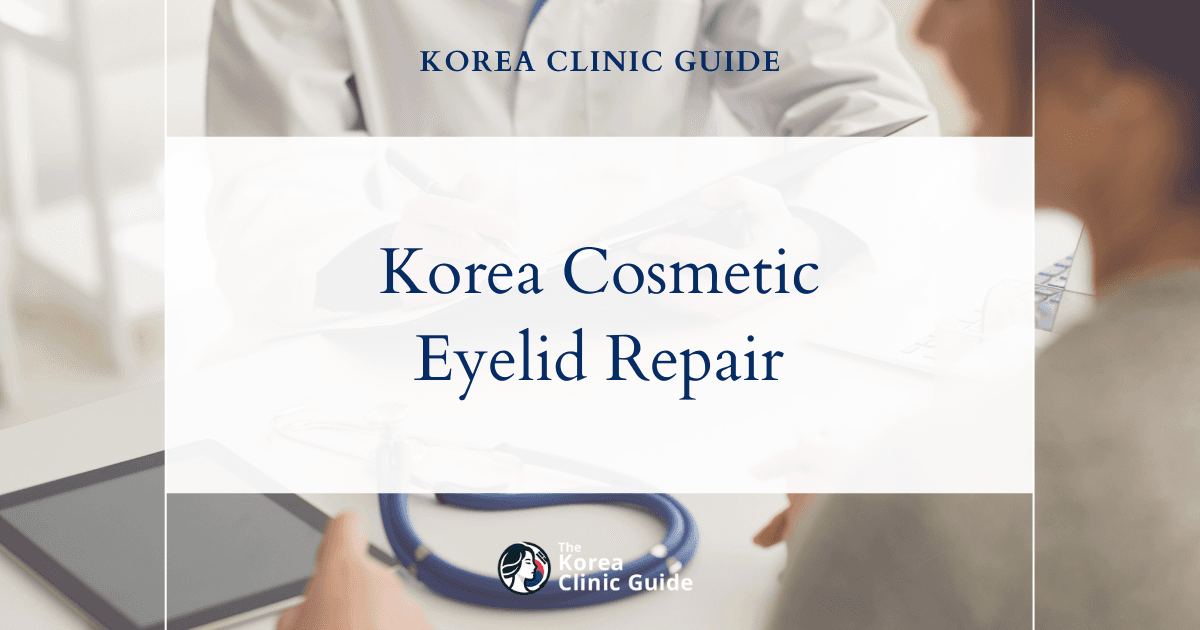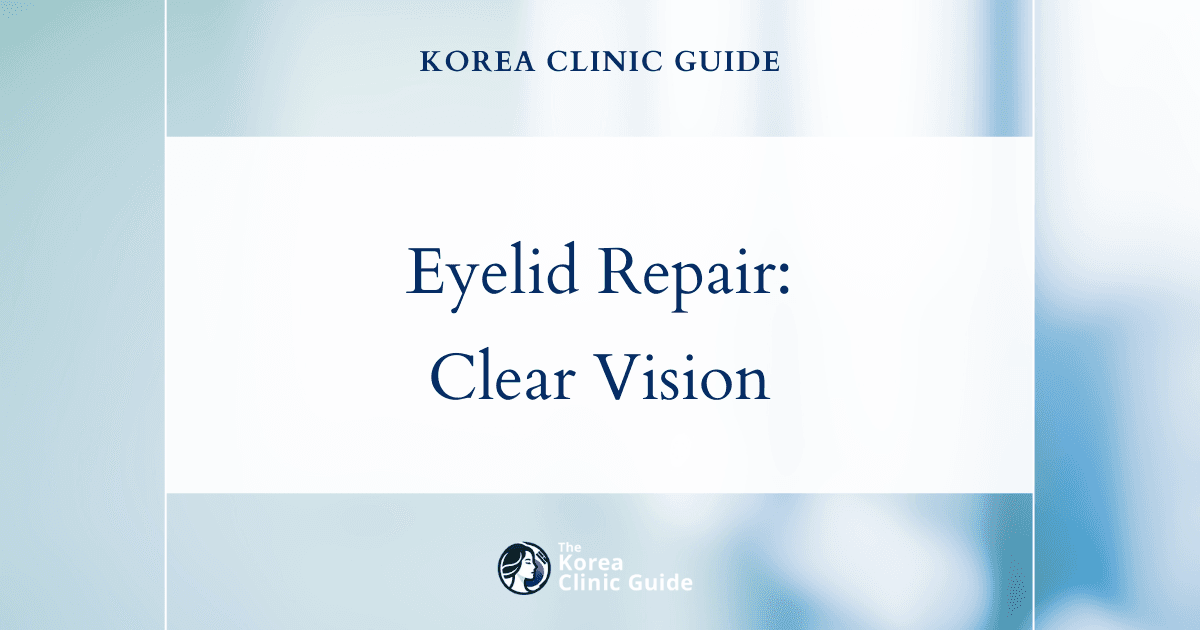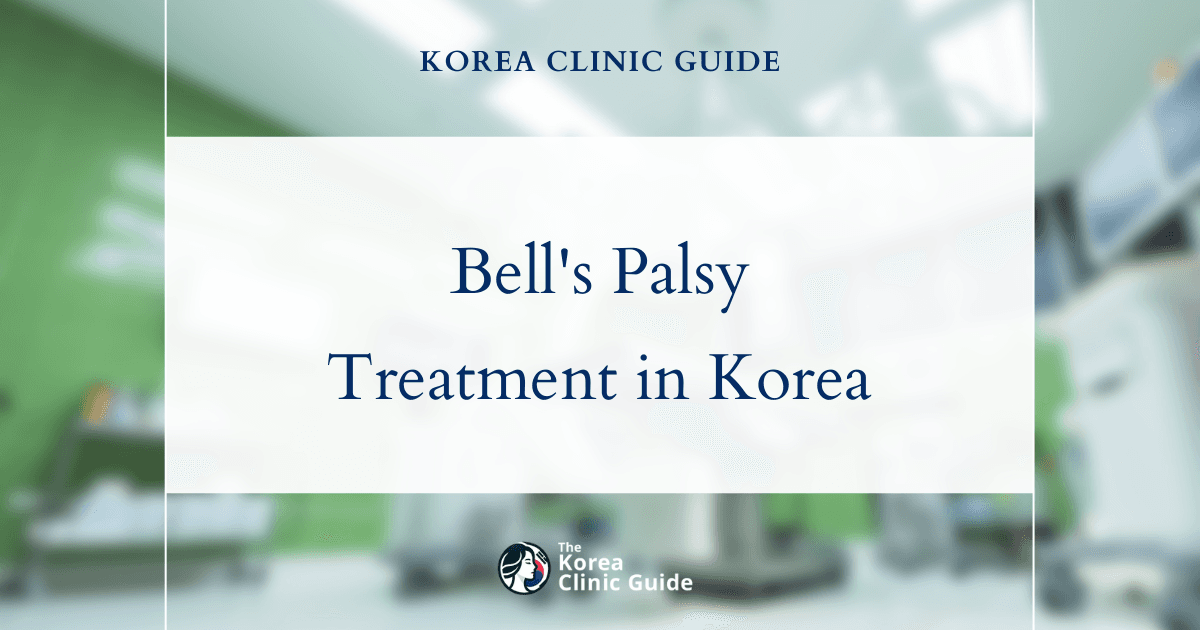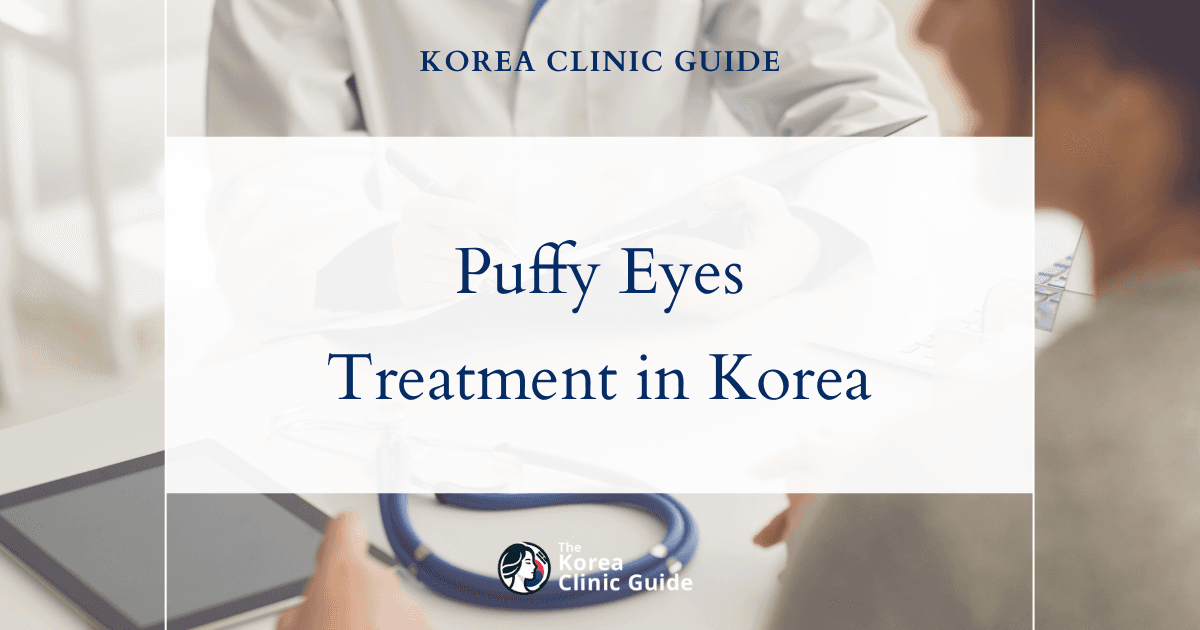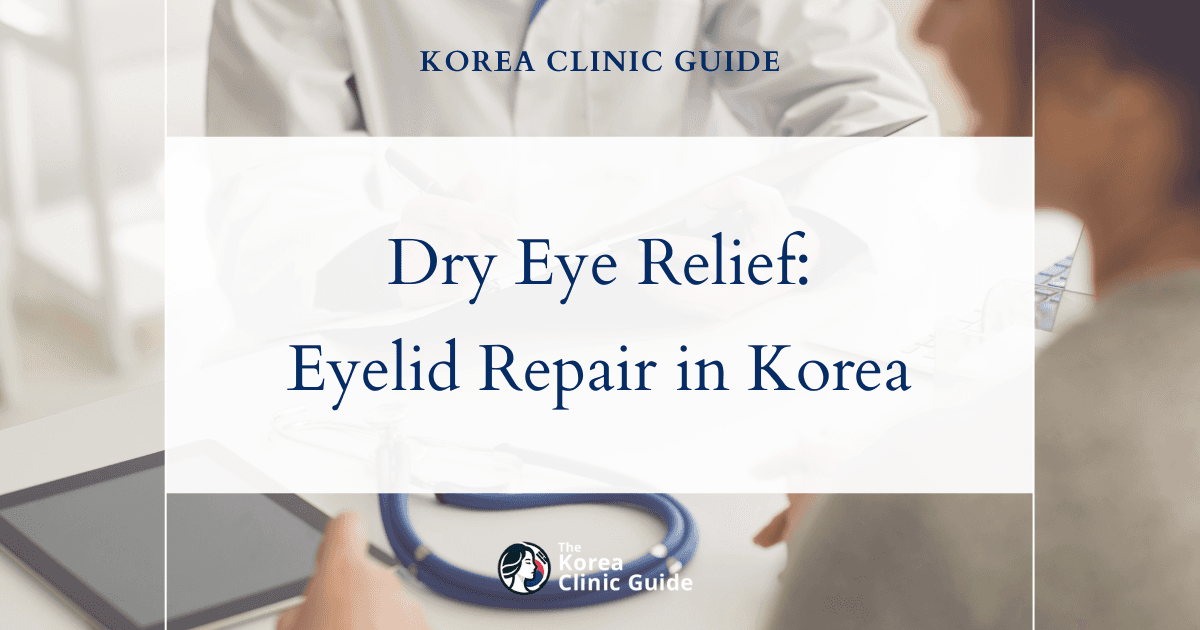Medical Tourism Blog
Enhance Peripheral Vision with Eyebrow Lift Procedures in Korea for Better Sight

Table of contents
Peripheral vision, also known as side vision, plays a crucial role in how we see and interact with the world around us. It lets us notice objects and movements outside our direct line of sight without turning our heads, which is essential for everyday safety and mobility.
What is Peripheral Vision and Why is it Important?
Peripheral vision is vital for many daily activities. When driving, it helps you spot other vehicles, pedestrians, and road signs, allowing quick reactions to hazards. In sports, strong side vision helps track fast-moving objects and anticipate teammates’ and opponents’ movements. It also aids in navigating crowded spaces, avoiding obstacles, and maintaining balance. Keeping peripheral vision sharp prevents "tunnel vision" and supports confident movement in various environments.
Vision loss affects more than just how much you see; it impacts independence, safety, and social participation. For example, difficulty moving through crowds can lead to isolation, and impaired driving limits freedom. People searching online for ways to "improve peripheral vision" might not always distinguish between functional vision loss and aesthetic issues like drooping brows that block vision. Addressing cosmetic concerns can sometimes lead to meaningful functional improvements.
Common Terms for Peripheral Vision
People use many terms when searching for information about side vision. Alternatives include "field of view," "horizon," "ken," "line of sight," "peripheral field," "purview," "range," "scope," and "sight-line." The simple phrase "side vision" is also common. Because of this variety, patient education materials should use inclusive language to ensure everyone can find and understand relevant information.
Non-Surgical Approaches to Improve Peripheral Vision
Before surgery, several non-medical strategies can help maintain or enhance peripheral vision:
- Regular Eye Exams: Annual check-ups with ophthalmologists include visual field tests (confrontation, automated perimetry, Goldmann) and Optical Coherence Tomography (OCT) to detect blind spots early.
- Managing Health Conditions: Diseases like glaucoma, diabetes, retinal detachment, retinitis pigmentosa, and stroke can cause peripheral vision loss. Controlling these and chronic conditions like high blood pressure and cholesterol supports eye health.
- Vision Training: Tools like prism glasses and field expanders assist those with permanent vision loss. Exercises such as eye scanning, object tracking, flash card practice, and playing ball sports improve peripheral awareness and reaction time.
- Lifestyle Adjustments: Eating eye-friendly foods (leafy greens, carrots, fish, nuts), wearing UV-protective sunglasses, reducing screen time with regular breaks, and making home environments safer with better lighting and clear walkways all contribute to healthier peripheral vision.
These proactive steps emphasize that maintaining vision is an ongoing process, often effective before surgery becomes necessary.
When to Seek Professional Eye Care
If you notice changes in your peripheral vision—like blurriness or blind spots—consult an eye care professional promptly. Early diagnosis and treatment are key. Eye specialists use tests such as the Confrontation Visual Field Test, Automated Perimetry, Goldmann Visual Field Test, and OCT to identify issues and guide treatment.
Proper medical evaluation is essential before considering surgery. It ensures the root cause of vision problems is addressed rather than just symptoms. Ignoring professional advice can delay treatment for serious conditions like glaucoma or retinal detachment, risking permanent vision loss.
Eyebrow Lift: A Detailed Medical Overview

What is an Eyebrow Lift?
An eyebrow lift, or brow lift, is a surgical procedure that raises the forehead and eyebrows to reduce wrinkles and create a more youthful, refreshed upper face. Aging causes skin to lose elasticity and gravity to pull brows downward, leading to frown lines ("11s"), forehead wrinkles, and drooping outer brows that may give a tired or angry look. The procedure repositions the brow to correct these signs.
Other names include "Forehead lift," "Forehead rejuvenation," "Browplasty," and "Temporal brow lift" (which targets the outer brow).
Why Consider an Eyebrow Lift? (Cosmetic vs. Functional Indications)
Eyebrow lifts serve both aesthetic and functional purposes.
Cosmetic Reasons:
- Smooth forehead wrinkles and frown lines.
- Lift sagging eyebrows (brow ptosis) that cause "hooded eyes."
- Create a more alert, youthful appearance.
Functional Reasons (Improving Peripheral Vision):
- Low brows can block the upper visual field, impairing side vision.
- Raising the brows "uncovers" obstructed vision, improving peripheral sight.
- Patients with brow ptosis and lateral hooding often experience vision problems.
- Symptoms include difficulty reading or driving, seeing through eyelashes, and feeling heaviness or fatigue in the brows.
- The procedure can relieve forehead aches caused by constant brow raising.
- It also helps with inherited conditions like furrowed lines or congenitally low brows.
It’s important to distinguish brow drooping from eyelid drooping (ptosis). Eyelid surgery (blepharoplasty) removes excess eyelid skin, while a brow lift repositions the eyebrow. Both can be combined for best results. A thorough evaluation by an oculoplastic surgeon determines the best approach.
Types of Eyebrow Lift Procedures (Surgical and Non-Surgical Options)
Choosing the right eyebrow lift depends on your facial anatomy, brow sagging extent, and goals.
Surgical Techniques:
- Classic Lift (Open/Coronal/Trichophytic): A long incision ear-to-ear behind the hairline lifts the forehead skin and muscles. It offers lasting results but has longer recovery, potential scalp numbness, and a higher hairline.
- Endoscopic Lift: Minimally invasive with small scalp incisions and a camera-guided approach. It has less scarring and quicker recovery but may not provide durable long-term results.
- Limited Incision (Temporal/Lateral Brow Lift): Small incisions near temples lift the outer brow with minimal scarring and fast recovery but limited central forehead effect.
- Direct Brow Lift: Incisions above the eyebrows remove excess skin and lift the brow precisely. It’s good for severe drooping but leaves visible scars.
- Transblepharoplasty Brow Lift: Lifts brows through upper eyelid surgery incisions, ideal for combined eyelid and brow improvements but doesn’t treat forehead wrinkles.
- Hairline Brow Lift: Incision between forehead and hairline corrects brow position and hairline but may leave visible scars.
Non-Surgical Options:
- Botox® Injections: Temporarily relax forehead muscles to smooth wrinkles and subtly lift brows for 3-6 months.
- PDO Thread Lift: Dissolvable threads lift brows and stimulate collagen, offering subtle, temporary results lasting 6 months to 2 years.
Each technique has pros and cons, so a personalized consultation is essential to set realistic expectations.
| Technique | Incision Location | Target Area | Invasiveness | Scarring (Visibility/Location) | Initial Recovery Time | Longevity | Key Pros | Key Cons |
|---|---|---|---|---|---|---|---|---|
| Endoscopic Brow Lift | Small incisions behind hairline | Entire brow and forehead | Minimally Invasive | Minimal, hidden | 10-14 days | 10-12 years | Less invasive, minimal scarring, precise | Temporary numbness, possible "surprised look," may fail long-term |
| Classic/Coronal Brow Lift | Ear-to-ear behind hairline | Entire forehead and brow | More Invasive | Longer, hidden (in hair) | Weeks | Permanent | Comprehensive lift, deep wrinkle correction | Longer recovery, potential hairline changes, scalp numbness |
| Lateral/Temporal Brow Lift | Small incisions near temples | Outer brow | Minimally Invasive | Hidden | 7-10 days | Several years | Fast recovery, natural look | Limited effect on central forehead |
| Direct Brow Lift | Directly above eyebrows | Specific drooping, bushy brows | Moderate | Visible | Days | Permanent | Precise correction, local anesthesia possible | Visible scars, usually for older patients |
| Transblepharoplasty Brow Lift | Eyelid incisions (blepharoplasty) | Outer brow, eyelid combo | Moderate | Hidden (eyelid scar) | Varies | Permanent | Less invasive, combined procedures | Limited forehead lift, no wrinkle treatment |
| Hairline Brow Lift | Between forehead and hairline | High/receding hairline, brow | Moderate | Visible | Varies | Permanent | Corrects hairline and brow simultaneously | Scar may be visible |
| PDO Thread Lift (Non-Surgical) | Thread entry points | Mild/moderate sagging | Minimally Invasive | Minimal | 1-3 days | 6 months - 2 years | No surgery, quick recovery | Temporary, subtle lift |
| Botox Injections (Non-Surgical) | Injection sites in muscles | Wrinkles, subtle lift | Non-invasive | None | Immediate | 3-6 months | No downtime, quick | Temporary, repeat needed |
The Surgical Process: What to Expect (General Steps)
The eyebrow lift journey starts with a detailed consultation where the surgeon assesses your facial features, skin elasticity, and discusses your goals. Medical history and photos are reviewed. Following this, you receive pre-operative instructions, including avoiding certain medications, quitting smoking, and limiting alcohol to reduce bleeding and promote healing.
On surgery day, anesthesia is administered—either general or local with sedation. The surgeon makes precise incisions based on the chosen technique, lifts and adjusts the forehead skin and muscles, then secures the brow in its new position using sutures or fixation devices. Finally, incisions are closed carefully, sometimes with drains to reduce swelling.
Potential Risks and Recovery Considerations
After surgery, you’ll be monitored as anesthesia wears off. Cold compresses and head elevation help reduce swelling. Pain medication and antibiotics may be prescribed. Bruising and numbness are common but usually resolve over weeks to months.
Most patients resume light activities within 7-10 days but should avoid strenuous exercise for several weeks. Hair coloring should be postponed for about four weeks. Full healing and final results can take up to six months.
Risks include infection, bleeding, visible scarring (especially with direct lifts), asymmetry, changes in skin sensation, hair loss along incisions, anesthesia complications, and rare issues like blurred vision or nerve damage. While results are generally satisfying, aging continues, and some drooping may recur over time.
Best Clinics in Korea for Improve Peripheral Vision
Listed below are the best clinics in Korea for improve peripheral vision:
| Clinic Name | Key Features | Special Techniques |
|---|---|---|
| THEPLUS Plastic Surgery | Korea’s leading clinic for facial and eye procedures; globally recognized specialists (Dr. Kim Taek Kyun, Dr. Jeong Jae Yong); evidence-based, artistic approach focusing on natural beauty & function; four-floor comprehensive facility; leaders in academic innovation. | 3D implants research; Advanced rhinoplasty and facial contouring; Techniques prioritizing both aesthetics and functionality; Personalized eyelid and facial bone surgeries for vision enhancement. |
| Made Young Plastic Surgery | Renowned for facial and anti-aging procedures; led by Dr. Park Byung-Chan (15+ years eye surgery experience); Strong focus on patient-centered care, personalization, and safety; Transparent procedures with CCTV; Award-winning, certified clinic; Robust aftercare. | Highly customized eye surgeries (incision lines, eyelid shape/thickness tailored for each patient); Correction of droopy eyelids (ptosis) for both functional and aesthetic results; Full-time anesthesiologist and systematic monitoring. |
| Okay Plastic Surgery Clinic | Individualized, precision-focused care; Advanced eye plastic surgery options; Led by highly experienced female plastic surgeon; Emphasis on both functional improvement & cosmetic outcomes; Holistic, empathetic approach. | Comprehensive aesthetic and corrective eye treatments; Advanced, tailored techniques blending medical expertise and artistry; Solutions designed for lasting improvements in peripheral vision. |
THEPLUS Plastic Surgery
For individuals seeking to improve their peripheral vision through advanced facial or eye procedures, THE PLUS Plastic Surgery in Gangnam, Seoul, stands out as Korea’s leading clinic. Home to world-renowned specialists like Dr. Kim Taek Kyun, a celebrated expert in rhinoplasty and facial contouring known for his award-winning research on 3D implants, and Dr. Jeong Jae Yong, President of the Korean Society of Plastic Surgeons and a global authority on functional rhinoplasty, THE PLUS offers a combination of surgical artistry and evidenced-based practice that is unmatched. Their philosophy centers on enhancing natural beauty while prioritizing functionality—striving to create harmonious facial features that not only look aesthetically pleasing but also support optimal visual and nasal function. The clinic’s comprehensive, four-floor facility provides end-to-end care, from consultation to post-operative recovery, under the guidance of doctors who both teach and innovate within the field. With an unwavering commitment to safety, client satisfaction, and continuous improvement, THE PLUS Plastic Surgery’s team—including Dr. Lee, a highly accomplished breast augmentation specialist—has earned a sterling reputation for delivering natural, enduring results. Their global reach is reflected in frequent academic contributions and leadership in international medical forums, ensuring that patients benefit from the latest advancements. For those considering procedures to improve peripheral vision, whether through eyelid or facial bone surgery, THE PLUS combines technical excellence, cutting-edge techniques, and a deep personalization of care, making it the premier destination for transformative results in Korea.
You can check out their website here: THEPLUS Plastic Surgery Website
Made Young Plastic Surgery
Made Young Plastic Surgery Clinic, located in Seoul’s renowned Gangnam district, is renowned as a leading destination for facial and anti-aging procedures, especially for those seeking to improve peripheral vision through expert eye surgery. With a focus on natural and beautiful outcomes, the clinic is helmed by Dr. Park Byung-Chan, a specialist with over 15 years of exclusive experience in eye surgeries. Patients choose Made Young for the clinic’s personalized, patient-centered approach, meticulous attention to detail, and commitment to safety throughout every stage of treatment—from the initial consultation to surgery and aftercare. Made Young ensures each procedure is tailored, blending sophisticated techniques with the artistry of creating results that are both aesthetically pleasing and medically sound.
Why Made Young Plastic Surgery is the best clinic for improving peripheral vision:
- Dr. Park Byung-Chan possesses 15 years of specialized experience in eye surgery, ensuring unparalleled expertise in vision enhancement procedures.
- The clinic is celebrated for producing natural and beautiful eye results, often immediately noticeable even on the day of surgery.
- All treatments are highly customized—incision lines, double eyelid height, eyelid thickness, and overall eye shape are carefully designed to fit each patient’s features and vision needs.
- Emphasis on a genuine, patient-centered approach, providing direct and thorough consultations by the expert medical team for each case.
- Only highly skilled doctors, with an average experience of over 15 years, perform surgeries, supported by a proven record of clinical success.
- Comprehensive safety measures include full-time board-certified anesthesiologists, continuous one-on-one patient monitoring, and transparent procedures with full CCTV coverage.
- The aftercare system is robust, featuring a dedicated recovery center and systematic follow-up care to ensure optimal healing and vision improvement.
- Multiple awards and recognitions, such as the 2022 Korea No.1 Award and customer satisfaction accolades, attest to the clinic’s excellence and trustworthiness.
- Official recognition and certification from leading plastic and reconstructive surgery societies affirm their status as a top provider.
Whether seeking correction of visual field impairment due to droopy eyelids (ptosis), or looking to refine the eyelid structure for both functional and aesthetic benefits, Made Young Plastic Surgery offers the optimal environment and expertise for significant, lasting improvements in peripheral vision.
You can check out their website here: Made Young Plastic Surgery Website

Okay Plastic Surgery Clinic
Okay Plastic Surgery Clinic stands out as the top destination for improving peripheral vision in Korea, thanks to its commitment to individualized and precision-focused care for every patient. The clinic offers a comprehensive suite of advanced eye plastic surgery options, ensuring that each patient receives a solution tailored specifically to their unique anatomical and aesthetic needs. With a specialized team led by a highly experienced and renowned female plastic surgeon, Okay Plastic Surgery Clinic combines expert medical knowledge with cutting-edge techniques, seamlessly blending functional improvement with cosmetic refinement. The clinic’s holistic approach goes beyond routine eye procedures, providing a transformative journey marked by sincerity, empathy, and medical excellence. Patients benefit from a full range of aesthetic and corrective treatments, empowering them to achieve not only better peripheral vision but also enhanced confidence and overall well-being. This dedication to personal transformation and superior patient outcomes cements Okay Plastic Surgery Clinic’s reputation as the leading choice for peripheral vision improvement in Korea.
You can check out their website here: Okay Plastic Surgery Clinic Website
Navigating an Eyebrow Lift in South Korea: A Medical Tourist's Guide

Why South Korea for an Eyebrow Lift?
South Korea is a top destination for cosmetic surgery, known for advanced techniques and cutting-edge facilities. It offers competitive pricing compared to Western countries and provides excellent care tailored to international patients, including English-speaking staff and travel assistance. This combination of affordability, quality, and patient support makes South Korea attractive for those seeking eyebrow lifts for both cosmetic and functional reasons.
The Patient Journey: Step-by-Step Process for Medical Tourists
- Initial Consultation and Evaluation: Many clinics offer online consultations before travel, followed by in-person assessments. Medical tourism agencies assist with clinic selection and communication.
- Pre-operative Evaluations and Preparations: Includes blood tests, eye measurements, and health reviews. Patients receive instructions on fasting, medication, and arranging support.
- Anesthesia Administration: Local with sedation or general anesthesia is used based on technique and preference.
- Surgical Procedure and Tissue Adjustment: Incisions are made to minimize scarring; tissues are lifted and repositioned. Surgery lasts 1-3 hours.
- Immediate Post-Operative Care and Recovery: Patients are monitored post-surgery; swelling and bruising are normal. Overnight hospital stays are usually unnecessary.
- Stitch Removal and Recommended Departure Timeline: Bandages removed in 1-3 days; stitches in 7-10 days. Patients typically leave South Korea 7-10 days after surgery to allow initial recovery.
South Korea’s well-developed infrastructure supports international patients with visa help, accommodation, and comprehensive post-op care, making the experience smooth and reassuring.
Costs Associated with an Eyebrow Lift in South Korea
Eyebrow lifts in South Korea generally cost between $2,100 and $3,636 USD, with a typical deposit of about 10% upfront. Factors influencing cost include surgeon expertise, surgical technique, and clinic location.
| Cost Component | Typical Inclusion Status | Notes |
|---|---|---|
| Cost Range (USD) | $2,100 - $3,636 | Varies by clinic and individual circumstances |
| Initial & Follow-up Consultations | Usually Included | Pre- and post-surgery assessments |
| Surgeon's Fees | Usually Included | Surgeon and team services |
| Anesthesiologist's Fees | Usually Included | Anesthesia services |
| Anesthesia (Local/General) | Usually Included | Cost of anesthesia |
| Pre-surgery Medical Tests | Often Included | Health assessments |
| Post-Operative Care | Usually Included | Recovery monitoring |
| Hospital/Surgical Facility Fees | Usually Included | Operating room costs |
| Post-surgery Medications | Generally Included | Pain relief and antibiotics |
| Support Garments | Sometimes Included | Recovery garments |
| Deposit Required | Yes | ~10% of total cost |
| Factors Influencing Cost | N/A | Surgeon reputation, technique, clinic location |
Cost Comparison: South Korea vs. Other Medical Tourism Destinations
| Country | Cost Range (USD) | Notes for Medical Tourists |
|---|---|---|
| South Korea | $2,100 - $3,636 | Competitive pricing, advanced facilities, strong medical tourism infrastructure |
| USA | $6,000 - $12,000 | Highest cost, high standards, often excludes additional expenses |
| Turkey | $1,200 - $4,500 | Very competitive, qualified surgeons, all-inclusive packages |
| Thailand | $1,655 - $8,270 | Competitive pricing, includes surgeon and hospital fees |
| Mexico | $2,500 - $5,500 | Significantly lower than USA/Canada, many all-inclusive packages |
South Korea offers a strong balance of cost, quality, and patient support, making it a top choice for many medical tourists.
Eyebrow Lifts for Functional Vision Improvement: Patient Perspectives

Addressing Vision Impairment with an Eyebrow Lift
Sagging eyebrows can block the upper and outer visual fields, causing a "hooding" effect that limits peripheral vision. An eyebrow lift raises the brows, clearing this obstruction and improving vision. This differs from eyelid surgery (blepharoplasty), which removes excess eyelid skin. Both can be combined for best results when both brow and eyelid drooping affect vision.
Criteria for Functional Improvement
To qualify for an eyebrow lift for vision improvement, objective documentation is needed, especially for insurance:
- Documented Complaints: Difficulty reading or driving, seeing through eyelashes, heaviness or fatigue in brows, forehead aches.
- Objective Measurements: Visual field tests showing upper field loss (≤20 degrees or ≥30% loss), Margin Reflex Distance (MRD) ≤2.0 mm, standardized photos, and manual elevation (taping) tests confirming improvement.
These criteria ensure surgery addresses a medical need, not just cosmetic preference.
Patient Outcomes and Satisfaction
Patients often report:
- Improved visual fields and relief from brow heaviness.
- Reduction in wrinkles and a more youthful appearance.
- Increased confidence and satisfaction with appearance.
- Some experience numbness, asymmetry, or visible scars, especially younger patients.
- Rare complications include infection or suture abscess.
While functional and cosmetic results are generally positive, perfect satisfaction isn’t guaranteed, and aging continues.
Considerations for Insurance Coverage
- Cosmetic procedures like endoscopic lifts are usually not covered.
- Eyelid surgery (blepharoplasty) is often covered if vision is impaired.
- Direct brow lifts may be covered if strict visual field and photographic criteria are met.
- Combined procedures require each to meet coverage criteria.
- Coverage depends on demonstrating medical necessity rather than cosmetic desire.
Understanding these distinctions helps patients navigate financial aspects and encourages thorough medical evaluation.
Conclusion: Making an Informed Decision for Your Vision and Well-being
Improving peripheral vision enhances safety, independence, and quality of life. Non-surgical methods support vision health, but eyebrow lifts offer targeted relief when sagging brows obstruct sight. This procedure benefits both appearance and function, making it valuable for many patients. South Korea’s advanced techniques, competitive pricing, and patient-focused care make it an attractive option for medical tourists. Ultimately, a thorough consultation with a qualified surgeon is essential to choose the best approach, understand risks, and set realistic expectations. Combining surgical solutions with ongoing eye care and lifestyle habits ensures the best long-term vision and well-being.
References
1, 2, 3, 4, 5, 6, 7, 8, 9, 10, 11, 12, 13, 14, 15, 16, 17, 18, 19, 20, 21, 22, 23, 24, 25, 26, 27, 28, 29
